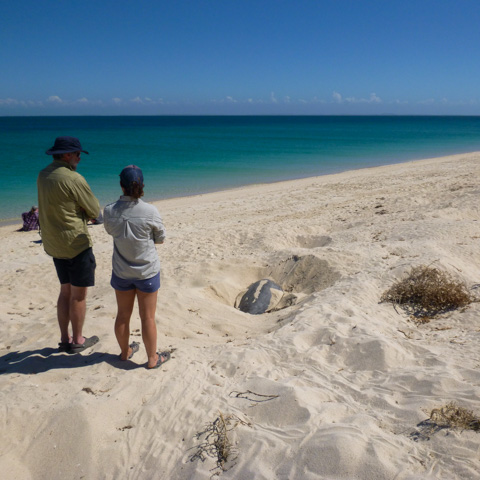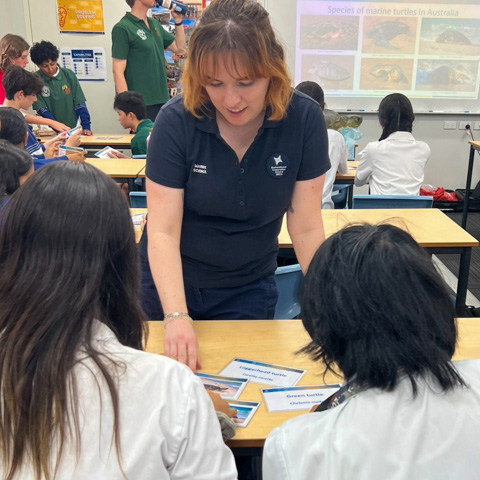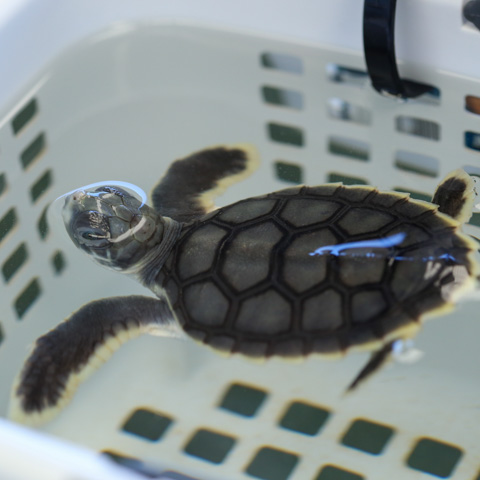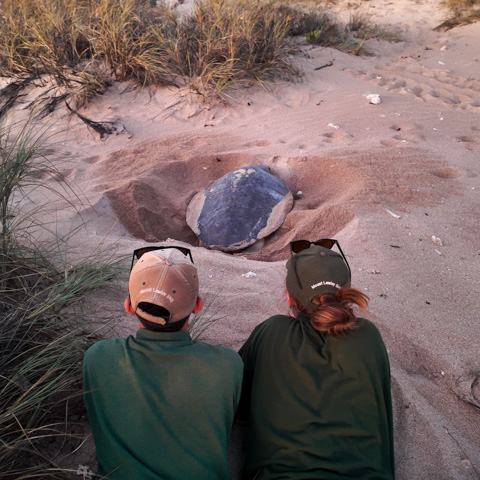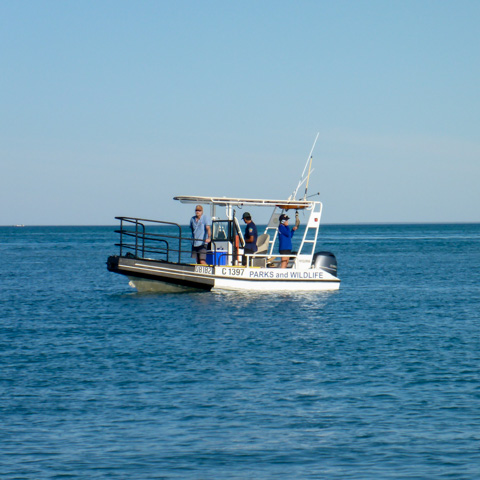Taking action to conserve flatback turtles
Flatback turtles are listed as ‘Vulnerable’ by the Australian Commonwealth Government, which means they are at risk of becoming endangered if conservation efforts are not put in place. The program helps to conserve the species by conducting research and monitoring, providing expert advice when needed, and informing and educating the public about flatback turtles and how to conserve them.
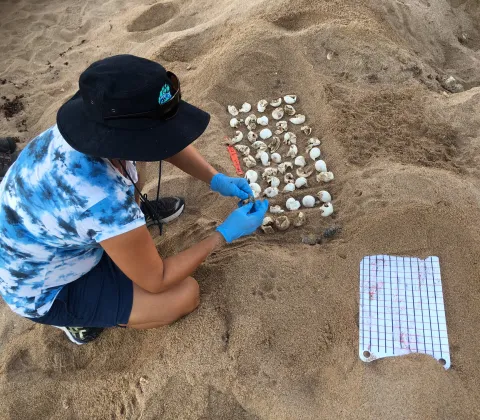
Above: A volunteer counts how many eggs have hatched from a flatback turtle nest after all hatchlings have left the nest. By doing this, scientists can understand how many eggs were laid, how many hatched successfully and how many did not develop into baby turtles. Some nests also have temperature loggers placed in them, which helps scientists understand if there is a link between the temperature of the nest and how many eggs hatch successfully.
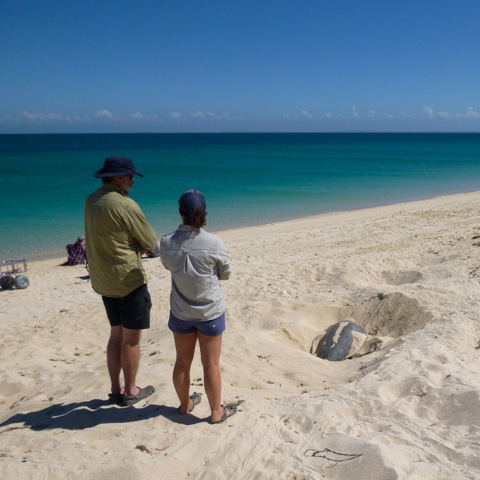
Staff and volunteers travel to Thevenard Island and Delambre Island each year to gather information on the flatback turtles that nest there. Each night turtles are watched from a safe distance while nesting and identified on their way back to the water, and the beach is checked again in the morning to make sure no nests have been missed. Collecting information from the same islands each year makes it easier to understand when changes happen, such as less turtles returning to nest. Photo - DBCA
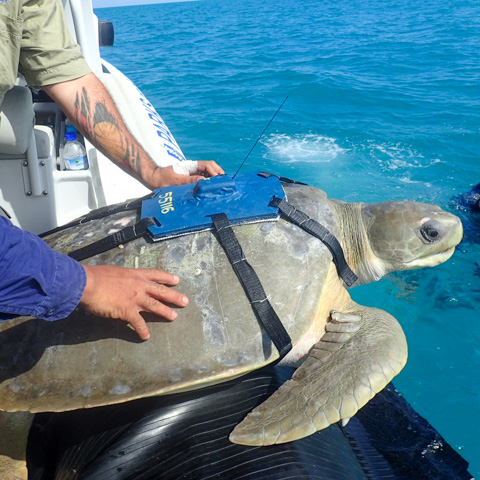
The program’s research scientists are constantly working to understand more about flatback turtles, which are listed as ‘Data Deficient’ internationally. Finding the answers to questions about their abundance, distribution, lifecycle and threats helps to plan and prioritise conservation efforts for the future, such as figuring out which beaches will become critical for turtles as temperatures increase. Photo - DBCA
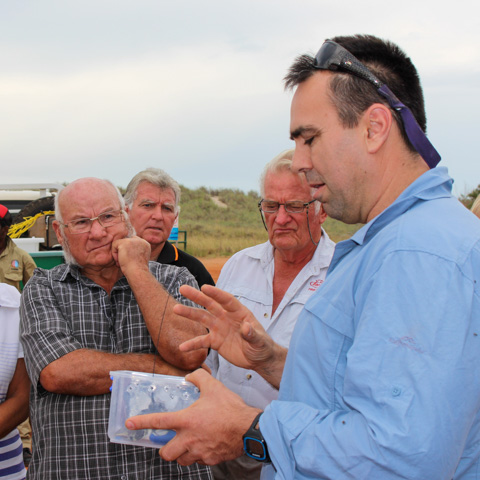
NWSFTCP staff provide expert advice about flatback turtles to those who need it, including businesses that want to understand if their plans to develop an area will disturb or injure flatback turtles, other government departments working to create management plans or issue licenses, and formal groups that meet to discuss marine turtles. This advice is provided to improve the conservation of flatbacks and other marine turtles. Photo - DBCA
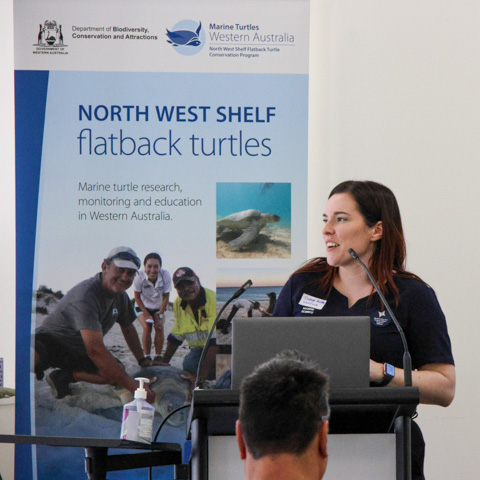
A major aim of the program is to inform and educate the public and stakeholders (people or businesses with an interest in the program) about flatback turtles and how to conserve them. This is done in many ways such as this website, social media, participation in local events, visiting schools and local community groups, and providing education resources for primary and secondary school teachers. Photo - DBCA





